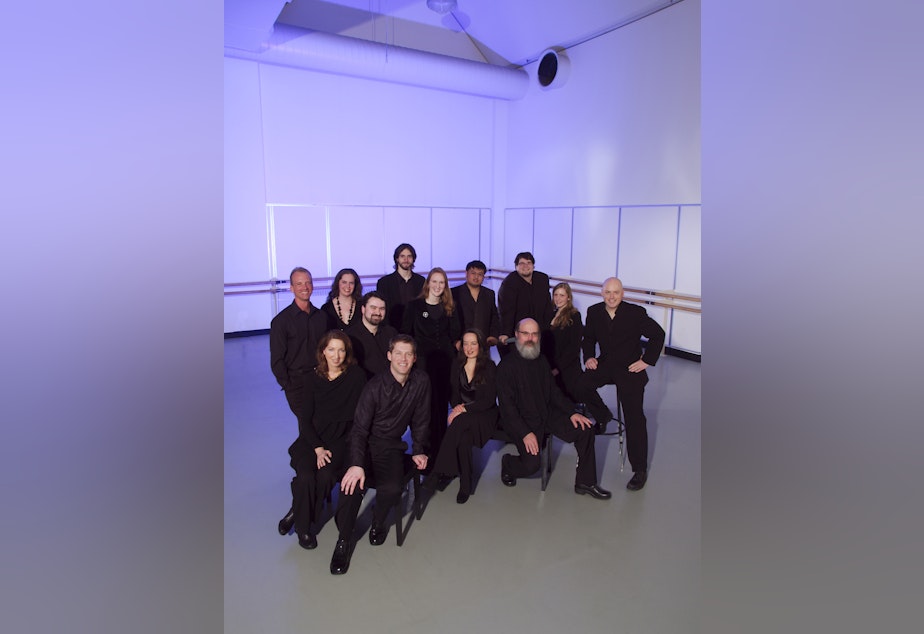Seattle's Tudor Choir: Twenty Years Of Vocal Excellence

Seattle’s Tudor Choir is a 20 year-old institution founded by a University of Washington student with a passion for music and history. During his years at the University of Washington, Tudor Choir founder and artistic director Doug Fullington put together a group of fellow students to sing English Renaissance music associated with the Tudor Monarchy of the 15
th
and 16
th
centuries.
Doug also found an outlet for performing English choral music as a member of the Compline Choir at Seattle’s St. Mark’s Cathedral. In 1993 Doug called on his fellow choral enthusiasts from St. Mark's and the UW and created a professional ensemble. He christened it the Tudor Choir. This season the choir celebrates its 20
th
season of acclaimed performances and recordings.
Doug Fullington says the reflective mood, rich harmonies and soaring melodies of English choral music – often written for the church – have an appeal that transcends religious and cultural boundaries. Doug says, "There’s a great profundity to this music, even if you’re not completely aware of what the text might be, or even if it doesn’t suit the beliefs that you’ve chosen. The music creates a wonderfully contemplative and expressive atmosphere that speaks to so many people."
Over the years the Tudor Choir has expanded its repertory from early English music to choral sounds associated with colonial America. Shape-note singing is a raucous style of community singing associated with congregations in New England and the Southern United States in the late 18
th
and early 19
th
centuries. Doug Fullington and the Tudor Choir gradually added this music to their repertory over the course of the Tudor Choir's 20-year history. The choir recorded shape-note music and sang it on a 1995 national radio broadcast of A Prairie Home Companion. Doug says the independent vocal lines of shape-note singing provide good training for his singers. The challenges of American shape-note singing can be applied in tackling the complexities of Renaissance music.
"The shape-note music is characterized by a great independence of the four vocal parts. Each part competes to out sing the other parts. That was the style. And for us as a choir it was wonderfully instrumental in helping us develop a lot of vocal independence as individual singers. It in turn really influenced how we approached the Renaissance music."
Doug Fullington is a Renaissance man with a keen ear for Renaissance music. When he put together the Tudor Choir in 1993 he was working on his law degree from the University of Washington. But law never became Doug’s profession. Outside of UW Law School, Doug’s passions included not only historical English choral music, but the history of Russian classical ballet as well. Along with his work as artistic director of the Tudor Choir, Doug went on to a career as a professional dance historian and arts administrator for Pacific Northwest Ballet in Seattle.
The Tudor Choir celebrates its 20
th
anniversary with a series of concerts this season at Seattle’s Blessed Sacrament Church in the University District.
Watch a YouTube performance of "Spem In Alium" by Thomas Tallis with the Taverner Choir
